The Divine Leela of Sage Atri and the Story of the Self-Manifested Moolark Ganesh | Importance of the Power of Observation
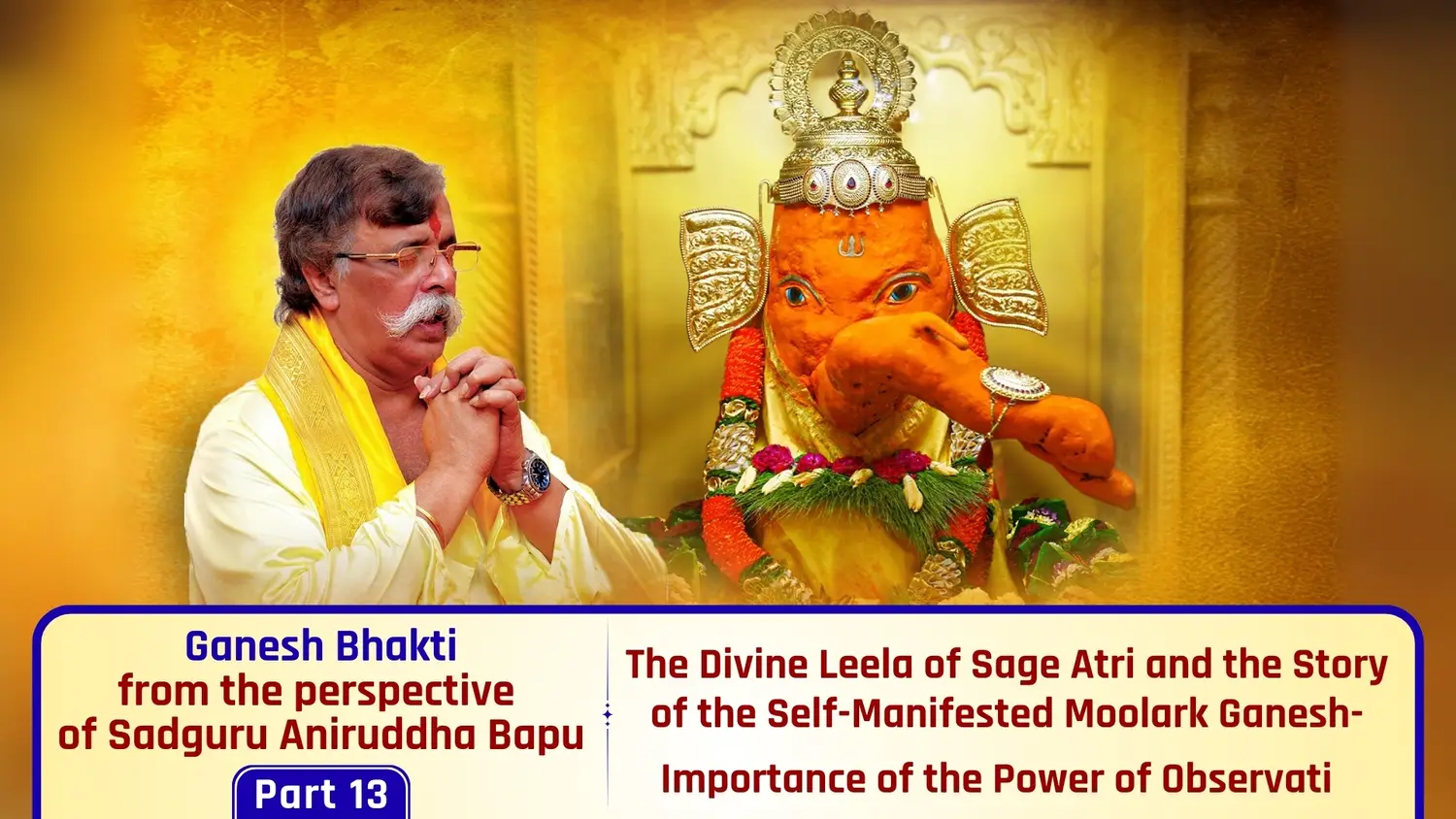
Previoust Article Next Article
हिंदी मराठी ગુજરાતી বাংলা ಕನ್ನಡ తెలుగు தமிழ் മലയാളം
In the editorial ‘Tulsipatra no. 695’, Sadguru Shree Aniruddha referred to the ten phases in human life. The explanation of the ninth phase begins from ‘Tulsipatra no. 702’. In the articles that follow, while elaborating on Kirat Rudra and the Kirat Era, Sadguru Shree Aniruddha explains the significance of Moolark Ganesh and the Nava Durga.
Reference – Editorial series ‘Tulsipatra’ by Sadguru Shree Aniruddha, published in the Dainik Pratyaksha newspaper, based on the Sundarkand of Shri Ramcharitmanas composed by Saint Tulsidas: Tulsipatra 1377–1379.
In Tulsipatra-1377, Sadguru Shree Aniruddha writes:
The Satya Yuga has four phases, and all four phases are of equal duration.
When the first phase of the Satya Yuga was about to come to an end, Sage Narada called for a council of all the Brahmarshis to discuss in depth what needed to be done for the next phase. After some decisions were taken in their assembly, Sage Narada, along with all the Brahmarshis, went to meet Sage Atri.
At that time, Sage Atri was quietly engaged in creating the Naimisharanya. On seeing Sage Narada and all the Brahmarshis, Sage Atri, in his usual calm, steady, and serious manner, questioned them all:
“O dear ones! From your faces itself, it is clear that you have come here for some very important task. I already know that you constantly travel everywhere for the welfare of mankind. I am also fully certain that you have not even the slightest trace of selfishness in your hearts. Therefore, if you wish to ask me any questions regarding the welfare of humanity, I grant you permission to do so.”
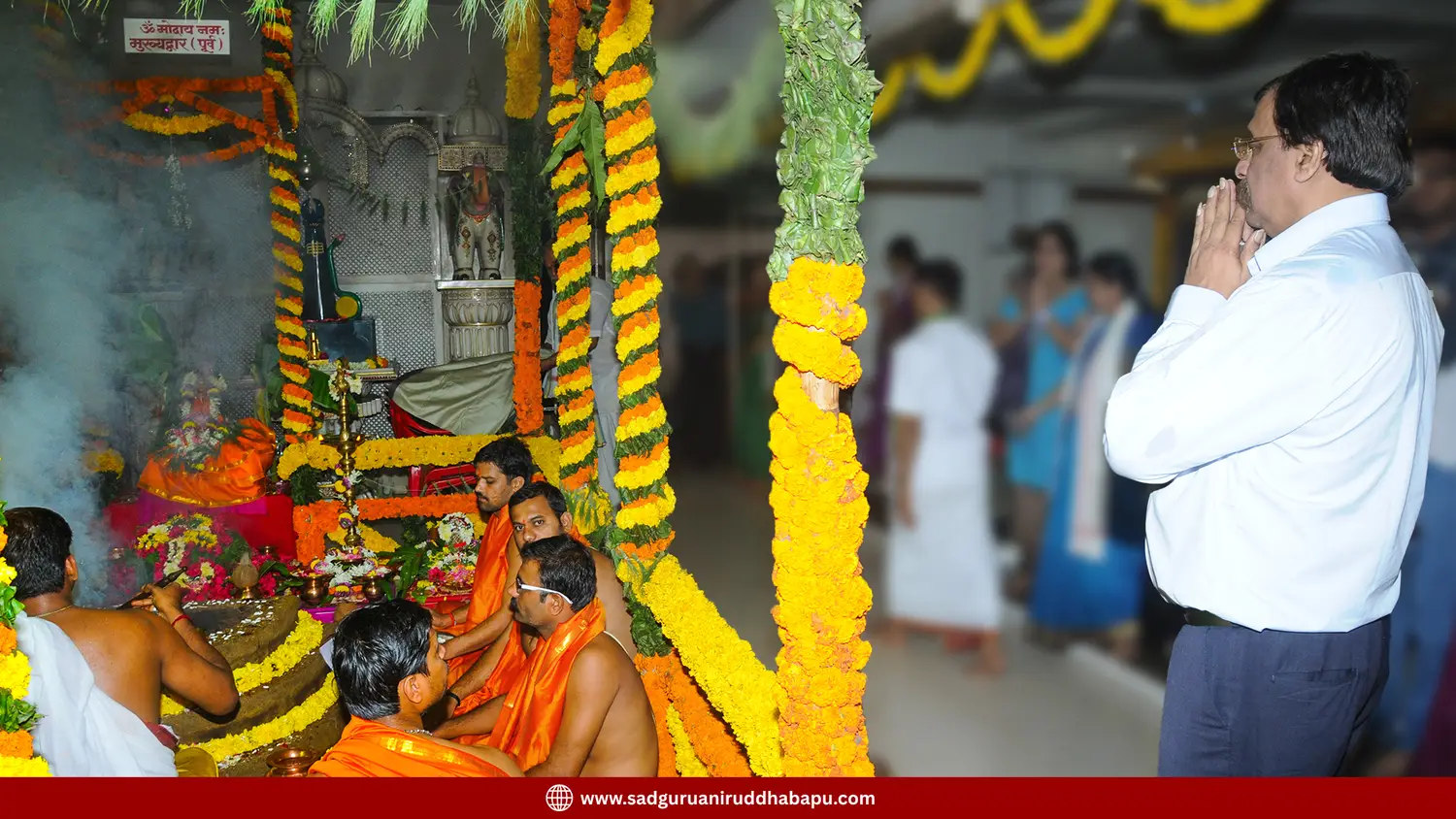
But at present, I am deeply engrossed in the creation of this sacred Naimisharanya and equally occupied with establishing its connection to the city of Shambhala. For this reason, I have made a resolve that I will not answer anyone’s questions either verbally or in writing.
Therefore, O dear ones, I welcome you all wholeheartedly. You may ask me as many questions as you wish, at any time, but my answers will come only through my actions, not my words."
Hearing these words of Sage Atri, Sage Narada along with all the Brahmarshis realized that this AdiPita, Bhagwan Atri himself, had already understood the very questions in their hearts. For they all had the same question— "If by the end of the very first phase of Satya Yuga of this Kalpa, humanity has already grown so weak in terms of action, what will happen in Treta Yuga and Dwapara Yuga? And what should we do about it?"
So, all of them began to stay at the ashram of Bhagwan Atri. However, Mother Anasuya was not present there; she was managing Sage Atri’s Gurukul, explaining the wives of the other sages various subjects and disciplines at an ashram far away from Naimisharanya.
Until evening, Sage Atri was only gathering samidhas (ritual firewood). He was carefully examining and selecting each samidha. Repeatedly, all the Brahmarshis requested him, "O Bhagwan, please let us do this work." But Bhagwan Atri simply shook his head in refusal.
After sunset, Sage Atri returned to the ashram with everyone and, after dinner, personally began sorting the samidhas according to the type of tree, length, wetness, and fragrance.
In this manner, after carefully classifying all the samidhas, he ensured that every bundle of samidha was stored in a separate container.
They all thought that Sage Atri would finally take some rest, but immediately he picked up Palash leaves and began making Patravalis (plates) and Dronas (bowls) from them.
Even this time, ignoring everyone’s repeated requests to help, Sage Atri continued making the Patravalis and Dronas all by himself. He was selecting each leaf meticulously and crafting plates and bowls with perfectly neat edges.
Sage Narada signaled all Brahmarshis with his eyes: “Look! Not a single leaf has even the tiniest hole, nor is a single leaf even slightly damaged.”
Once the Patravalis and Dronas were made, Sage Atri kept them all neatly in an empty corner and said to the Brahmarshis, “You all wish to assist me, don’t you? Then tomorrow, your task will be to dry these freshly made green Patravalis and Dronas in the sun.”
Saying this, Bhagwan Atri went to his meditation hut (Dhyankuti) for his evening meditation.
The next day, all the Brahmarshis woke up at Brahma Muhurta, performed their spiritual practices, and from sunrise began working on their assigned task. Each Brahmarshi worked with utmost sincerity, and by sunset, all the Patravalis and Dronas had dried completely.
When Sage Atri returned to the ashram at sunset, the Brahmarshis, like delighted children, eagerly showed him how well all the Patravalis and Dronas had dried.
Sage Atri appreciated their hard work and then asked,
“Which of these Patravalis and Dronas dried by noon? Which dried between noon and afternoon? And which ones took until sunset to dry completely?”
Now all the Brahmarshis were bewildered. They had not observed this at all, and using their spiritual powers to know the answer in front of Bhagwan Atri himself would have been inappropriate.
Because of this, all the Brahmarshis felt ashamed and admitted their mistake.
Then Sage Atri asked,
“But how did this happen? You all are well aware of the importance of this process.”
No one had an answer.
In Tulsipatra 1378, Bapu further writes:
Looking at all the Brahmarshis, who were inwardly feeling embarrassed, Sage Atri said very gently,
“My sons, let go of this feeling of guilt. Because when a mistake gives rise to guilt, slowly it turns into regret, and when that regret keeps pricking the mind continuously, it eventually transforms into sadness or a sense of inferiority. And that is even more harmful.
So today, you yourselves collect the leaves of the Palash tree, you make the Patravalis (leaf plates) and Dronas (leaf bowls), and tomorrow you will dry them as well. And this time, do not forget to observe carefully.
I am going into my meditation hut now and will come out only at sunset tomorrow. Be ready with all the work completed by then.”
All the Brahmarshis began their work with deep thoughtfulness and great enthusiasm. They completed all the tasks flawlessly according to Sage Atri's instructions and arranged everything properly by the next day's sunset.
Only Sage Narada had not done any work; he simply moved around with each Brahmarshi as they worked.
Sage Atri came out from his meditation hut, at the exact time he had specified, looked at all the Brahmarshis with a questioning gaze, and then each Brahmarshi came forward to show the work they had done.
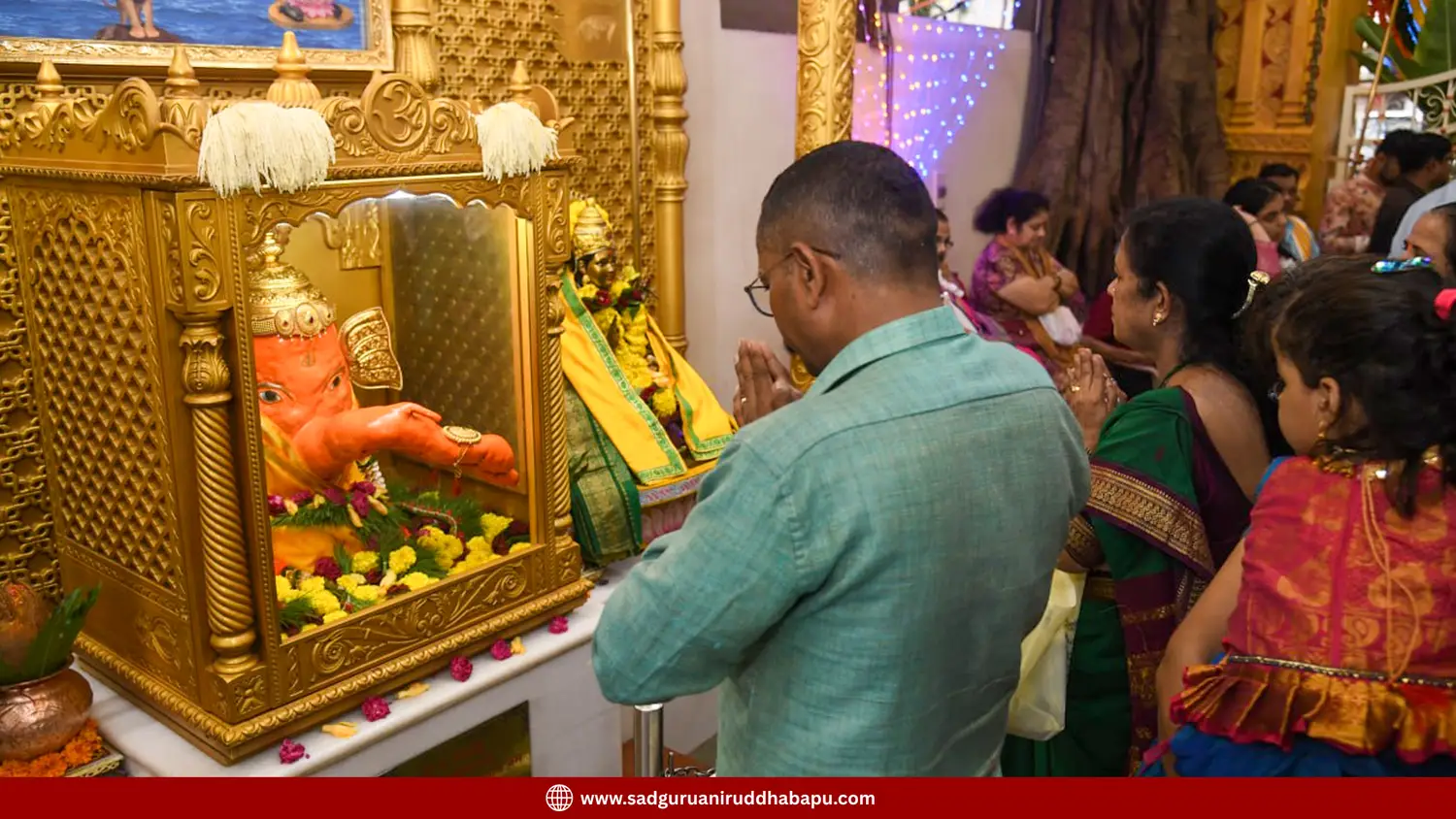
Everyone’s work had been done very neatly, and they had even managed to classify the dried leaves properly.
However, despite this, there was no sign of satisfaction on Sage Atri’s face. Now, none of the Brahmarshis had the courage to ask him any questions because all the other Brahmarshis were created beings, while Bhagwan Atri was Swayambhu (the one who comes into being on its own, without external cause or influence), the Adi Shakti in male form.
Then Sage Atri said,
“O friends! Only Devarshi Narada has done the most excellent work. The work done by all of you has only earned a score of 100 out of 100, not 108.”
Now the Brahmarshis were even more puzzled.
‘But Sage Narada had neither collected a single Palash leaf nor made a single Drona or Patravali. Then how could this be?’ — this thought crossed the minds of each one of them.
Yet each one of them was fully certain about one thing: Bhagwan Atri would never speak untruth, never be biased, nor would he alter reality merely to test them.
Just then, all the Brahmarshis realized that outside the ashram, all their chief disciples had arrived — among them some were Maharshis, some were ascetic sages, some were new sages, and some were young Rishi-kumars.
Now Sage Atri instructed them all to have the same task performed once again over the next two days by their respective disciples and said,
“This time, each of you will give marks to your disciples according to their work — and I will give marks to you.”
All the Brahmarshis explained Sage Atri’s instructions to their disciples and themselves began observing each disciple’s work very closely.
Two days later, Sage Atri once again came out at the same time. Along with him, every Brahmarshi presented the work done by their respective disciples before Sage Atri and also shared the marks each one had received out of a hundred.
After this, Bhagwan Atri instructed all the disciples of the Brahmarshis to return to their respective dwellings.
As soon as all the Maharshis and Rishis departed from there, the Brahmarshis, with hearts full of childlike devotion, looked towards Sage Atri with great eagerness and curiosity.
Blessing them all abundantly, Sage Atri began to speak, “My dear ones! Even your distinguished disciples have not received a full score of 100 out of 100. Do you know why this is so?”
All the Brahmarshis thought deeply. However, they could not find the answer, nor could they use any of their metaphysical powers (siddhi) at the Atri Ashram to seek it. Therefore, with utmost humility, they prostrated before Bhagwan Atri and said, “We cannot understand the reason behind this.
Neither we ourselves could score 108 out of 100, nor could our disciples even manage to score 100 out of 100. Our intellect seems clouded or stunted.
O Devarshi Narada! You alone have scored 108 out of 100. Kindly grace us and answer our questions.”
Devarshi Narada replied clearly, “Even I cannot go beyond the words of Bhagwan Atri, and I have complete faith in His grace and compassion. So, he will do whatever needs to be done.”
At once, Bhagwan Atri invoked the AdiMata Anasuya, and in the very next moment, the Mother herself appeared beside him.
The moment those Brahmarshis saw the compassionate Adimata, tears welled up in their eyes. “She was the Adimata after all! Her heart was moved with deep compassion, and she immediately summoned Shri Vidyaputra Trivikram there.
In Tulsipatra–1379, Bapu further writes,
As per the command of Adimata Anasuya, Bhagwan Trivikram arrived at the ashram and began addressing all the Brahmarshis:
“O dear friends! All of you Brahmarshis are my closest kin, and each one of you possesses immense competence, efficiency, and knowledge.
Yet at this moment, you all are entangled in the feeling that you have fallen short somewhere.
The question that brought you here to Bhagwan Atri was: — ‘In this Kalpa, mankind is becoming inefficient and weak right after the first phase of the Satya Yuga? What will happen in the future then?’
It was to answer this very question that Bhagwan Atri orchestrated this entire divine play.
Not just you, even I, along with my elder brothers Hanumant and Shree Dattatreya, stand before Atri–Anasuya as a child. And it is exactly this very truth that you have forgotten; hence you feel embarrassed for scoring fewer marks. You need not be embarrassed for Agastya as a Brahmarshi is different, and Agastya standing before Atri–Anasuya in childlike devotion is entirely different.
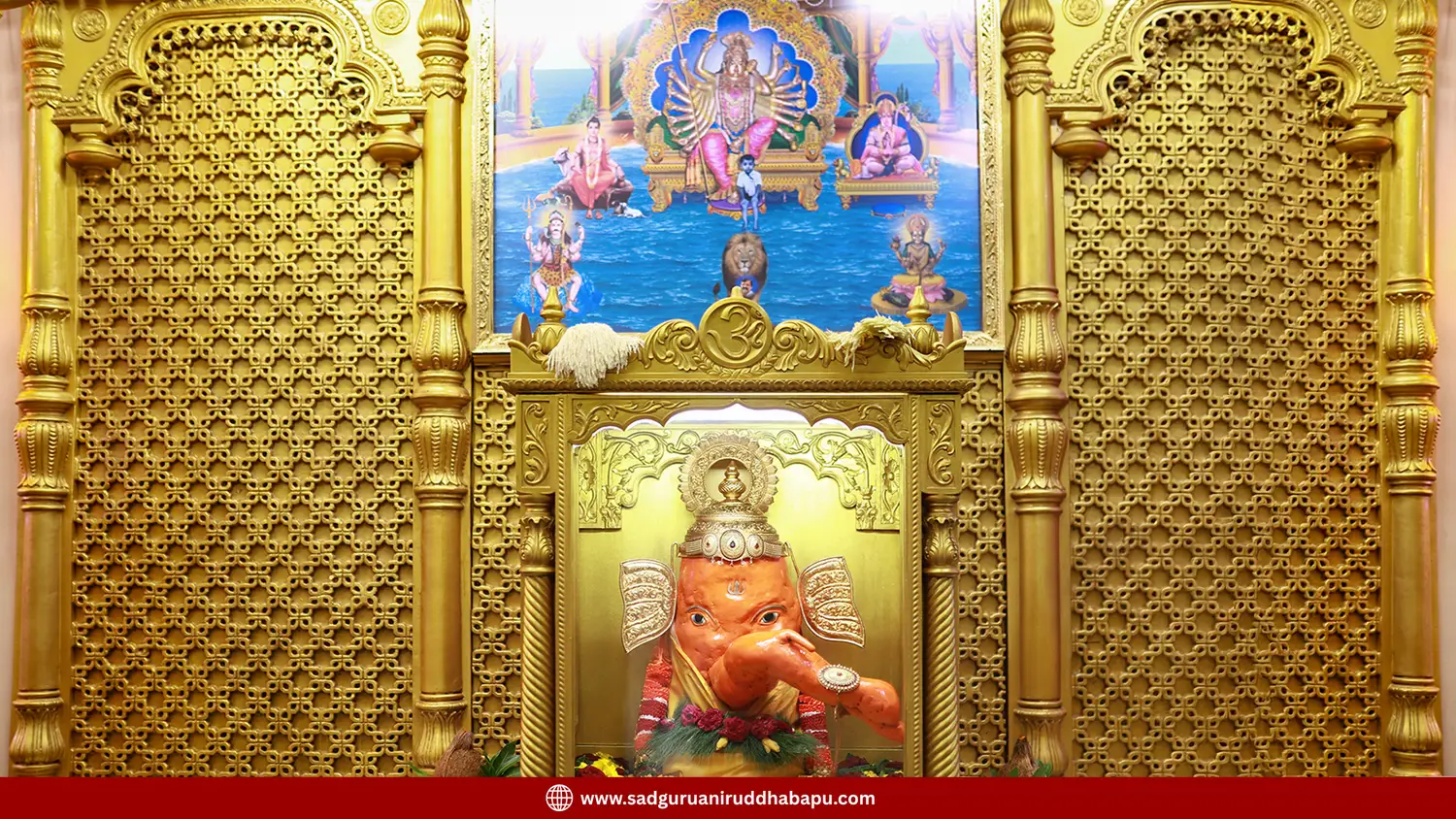
Look carefully at all the actions that have taken place here! The first mistake that you all committed was - you followed Atri Rishi’s command and made the patravalis (leaf-plates) and dronas (leaf-bowls). But when Bhagwan Atri himself was making them, you did not observe his actions carefully and therefore, you failed to notice how Atri Rishi classified the items he made himself.
In the Satya Yuga of this Kalpa, man has been making this very mistake; he acquires knowledge, he works too, but he falls short in using the power of observation. And this is exactly what Bhagwan Atri has shown you all.
Now you have received half the answer to your question, haven’t you?”
Overjoyed, all the Brahmarshis instantly approved of Bhagwan Trivikram’s words, exclaiming, “Sadhu, Sadhu!”
Then Bhagwan Trivikram continued:
“O beloved Brahmarshis! Now the latter half of the answer to your question.
The mistake you made was the same committed by all the Maharshis too. You are the teachers of all Maharshis and Rishis, yet while giving your disciples instructions, you never sincerely shared with them the experiences you gained from your own mistakes.
A teacher himself grows gradually by learning from his mistakes, and he is supposed to share those experiences with his students so that their journey of learning becomes easier. That too did not happen here. Hence, even your good students ended up scoring very few marks.
At present, this is precisely what is happening on Earth in this Kalpa. I It is not that you have failed in training your disciples namely the Maharshis and Rishis; they, in turn, have also been training other teachers effectively.
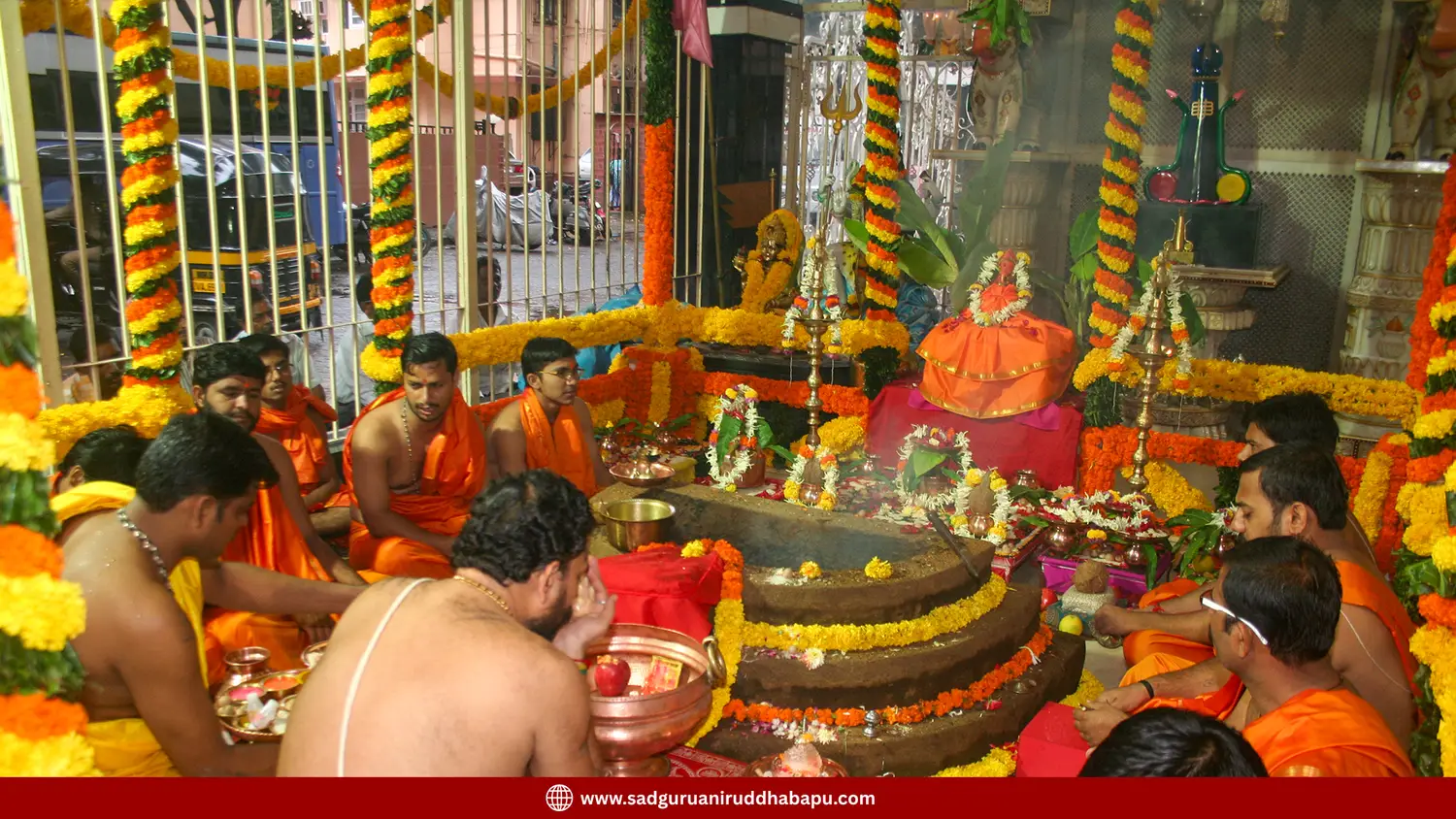
However, these teachers, who are not Rishis themselves, are not sharing the lessons learned from their own mistakes with their students. Most importantly, the sequence of observation followed by action is no longer reaching the students. That is why man’s efficiency in this Kalpa is rapidly declining.
Deeply moved, all the Brahmarshis first prostrated before Atri–Anasuya and then bowed in reverence to Bhagwan Trivikram too.
But Brahmarshi Yadnyavalkya, recalling something, seemed to fall into deep thought. Noticing this, Trivikram directly asked him, “Brahmarshi Yadnyavalkya! You are the greatest among teachers. Why have you become so pensive? Is there a question in your mind? You may ask me anything you wish.”
Brahmarshi Yadnyavalkya said, “O Trivikram! But there was and still is one exception to our question. In the ashram of Brahmarshi Dhaumya, everything has been functioning perfectly, yet the reason behind this remains unknown. There, everyone works with keen observation and utmost perfection. What could be the reason behind this?”
Sage Dhaumya too agreed with Yadnyavalkya, saying, “Yes! But even I have not been able to understand the reason.”
With a smile, Bhagwan Trivikram, said, “The Adimata keeps the answer prepared before any question can even arise.
When Brahmarshi Dhaumya had gone on a pilgrimage across the country for a hundred years, the responsibility of his ashram was managed by his eldest son, Maharshi Mandar, and his wife, Rajyogini Shami.
The question troubling you had troubled those two ninety-nine years ago as well. They searched intensely for an answer but could not find one. At the same time, they learned that in the gurukuls of the Asuras, their demonic activities were conducted with great discipline and order.
Then, keeping their penance and purity safe at the lotus feet of Adimata, they went to Tamratamas forest along with Devarshi Narad. Within just a few days, they realized the importance of the power of observation in learning and work, and also the significance of teachers sharing their past mistakes in the form of stories with students. They immediately returned to their ashram.
When they regained their penance and purity from Adimata, they began to practice the power of observation and the art of narrating mistakes in the form of stories to students.
One day, while deeply contemplating this, they entered a state of meditation. During meditation, they saw the schools in Tamratamas and realized that they had unknowingly imitated the Asuras — even if for a good cause, imitating the Asuras was wrong.
So, as atonement, both of them offered all their spiritual practices, Upasanas, penances, and purity to Devarshi Narada in donation.
Because of their righteous conduct, the Adimata was immensely pleased and asked them to seek a boon.
Since both of them considered Me alone as their deity, they asked Me the way, requesting Me to seek the boon from the Adimata on their behalf—thus placing Me in a real quandary.
When I granted them the wisdom to ask for the right boon, both of them prayed to the Adimata: “O Adimata! Please tell us from where and how one can obtain the original source of pertinent power of observation and the proper path of teaching, instead of following the ways of the demons. This is the boon we desire from you.
Not only this, but please also tell us the source through which even the holy Shraddhavans dwelling in the region of demons may be able to work with keen observation.”
Hearing this, the Adimata granted them the boon by saying “Tathāstu (So be it)” and asked Me to guide them.
I then brought them here, to this very Naimisharanya, taught them the supreme meditation (Dhyan), and through that meditation, revealed to them the source of knowledge beyond intellect and the source of essence beyond demonic powers.
That source is none other than Bhagwan ShreeMoolark Ganapati, the Lord and Master of the Mooladhara Chakra in every being.

As they saw ShreeMoolark Ganapati within their own Mooladhara Chakra as well as in the Mooladhara Chakra of the Earth, their wish to completely surrender grew stronger and stronger, reaching its highest peak.
This supreme and most sublime wish of theirs delighted the Adimata greatly and became exceedingly dear to Shree Ganapati.
Then, from Maharshi Mandara was born a tree, and from Rajyogini Shami, a tender sapling sprouted forth.
Thus, the Mandar tree and the Shami plant were created for the very first time.
Along with this, the Adimata granted the boon that whoever worships any form of Shree Ganapati, especially the Moolark Ganapati under the Mandar tree and with Shami leaves, will be blessed with the power of observation beyond the intellect, and the strength to remain unharmed even amidst demonic circumstances, i.e., divine wisdom (Pradnya).
In this way, the very first Mandar tree and the very first Shami plant in the universe came into existence here in Naimisharanya.
Since the Mandar tree blossomed in a single ‘nimish’ (i.e., the blink of an eye), I named it ‘Nimish Tree.’ And during the recently concluded Tripurasura war, I Myself prepared the arrows of Shiva’s sons by dipping the samidhas (sacred wooden sticks or twigs) of the Mandar tree in the sap of the Shami plant.
Hence, wherever the spears and arrows of Shiva’s sons struck the land of the Tamratamas forest, Mandar trees and Shami plants grew there in abundance—to protect the Shraddhavans.
Hearing this story, all the Brahmarshis joyfully began to congratulate Sage Dhaumya. At that very moment, they realized that the Mandar tree and the Shami plant were standing right before them.
With great love, affection, and reverence, all the Brahmarshis embraced the Mandar tree. Then, Trivikram offered the compassion of all these Brahmarshis toward the ordinary Shraddhavans in the form of water to the roots of the Mandar tree and into the hands of Trivikram came the first Swayambhu idol of Moolark Ganesh of this universe from the very roots of that Mandar tree.
Brahmavadini Lopamudra then told everyone on Mount Kailash:
“That was the very moment when the Swayambhu idol of Moolark Ganapati was installed by Trivikram in front of Sage Atri’s ashram at Naimisharanya.
Why?
Because through the chanting of Moolark Ganapati’s Mantras, the divine intellect (Pradnya) granted by the Almighty gains mastery over the human mind and intelligence, liberating the devotee from all troubles and mistakes.”
